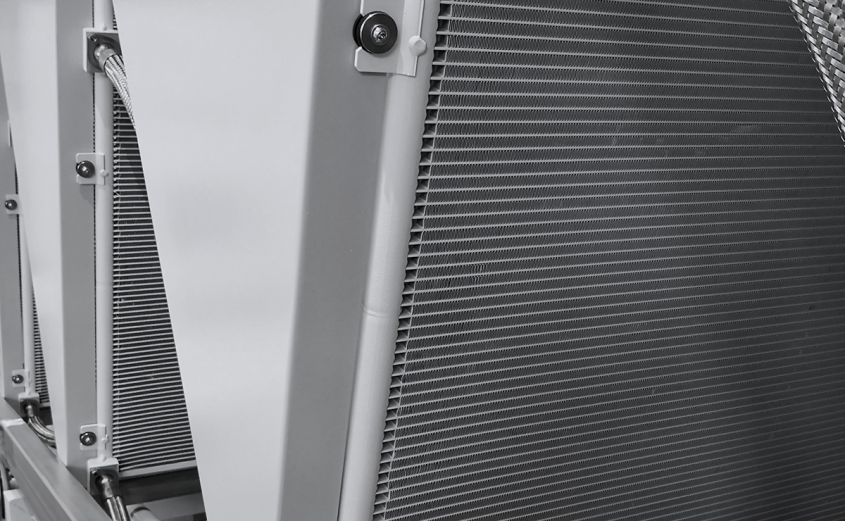
As microchannel heat exchangers become more widespread in air conditioning and cooling systems, the industry continues to improve one of the most important elements – surface coatings. Surface coatings play a key role in extending the life of the coil, especially in environments where moisture, salty air, or chemicals can accelerate its destruction. New developments in coating technology have significantly improved the performance and durability of microchannel coils, making them even more attractive for use in new installations, as well as for upgrades, such as the York microchannel coil.
Improved corrosion resistance due to advanced surface treatment
One of the main problems associated with aluminum-based microchannel coils is their susceptibility to corrosion under certain environmental conditions. Although aluminum has excellent thermal conductivity and is lighter than copper in weight, it requires special protection when exposed to moisture, chlorides, or acid vapors. This is especially important in coastal areas, industrial areas and places with high humidity, where unprotected surfaces deteriorate over time.
To solve this problem, manufacturers have developed advanced coating technologies that provide long-term protection without compromising thermal performance. One of the most common methods is the use of hydrophilic coatings, which contribute to the easy release of condensate and reduce water retention on the surfaces of fins and pipes. By minimizing the amount of standing water, these coatings prevent the formation of a corrosion-friendly microenvironment, a problem that traditional coils have faced in the past.
One example is the improvement of epoxy resin-based protective films used in the manufacturing process. These coatings create a reliable barrier to aggressive substances without compromising the structural integrity of the coil. Unlike some older paint coatings that peeled off during thermal cycling, the new versions adhere firmly to the aluminum surface, providing uniform protection throughout the life of the system.
For business leaders planning to replace York microchannel coils, all these innovations mean longer service intervals, fewer unplanned maintenance calls, and improved overall system reliability, especially in harsh commercial and industrial environments.
Improved thermal performance and resistance to pollution.
In addition to corrosion resistance, new coating technologies also improve the functional characteristics of microchannel heat exchangers. Some new coatings are designed not only to protect, but also to optimize the dynamics of air flow and reduce the formation of dust, oil mist and solid particles.
Anti-fouling products are becoming increasingly important in data centers, food processing plants, and on rooftops in cities where airborne particles are often present. Such coatings reduce adhesion, making it difficult for dirt and debris to adhere to the surfaces of the coils. As a result, cleaner operation is ensured, pressure drop is reduced, and heat transfer efficiency is maintained — parameters that directly affect energy consumption and system durability.
In addition, some coated microchannel coils also contain antimicrobial additives that prevent mold and bacteria from multiplying in high humidity conditions. This is especially useful in hospitals, laboratories, and clean rooms where indoor air quality is of paramount importance.
Engineers and technicians working on outdated York equipment have come to the conclusion that the transition to newer versions of york microchannel coils equipped with such new coatings brings real benefits. Not only do they withstand environmental degradation better than their predecessors, but they also maintain optimal performance with lower cleaning and maintenance costs, which ensures cost-effectiveness and continuity of operation.
Conclusion: This is a key factor in the long-term reliability of the system.
Coating technology may not be a priority when choosing heat exchangers, but its impact on durability, efficiency, and maintenance should not be overlooked. As microchannel heat exchangers gain popularity, displacing traditional finned-tube designs, advances in protective coatings play a key role in their success, especially in difficult operating conditions.
Coating technologies being created today, from hydrophilic coatings that simplify condensate management to antifouling coatings that maximize coil performance, are revolutionizing the prospects for thermal regulation. For those who want to modernize systems or order equipment for new buildings, choosing microchannel heat exchangers with the latest coating technologies is not just an upgrade, it is a strategic investment in the long—term operation of the system.
Modern coated microchannel coils, whether as part of a roof installation, cooling system, or industrial refrigeration equipment, are a more reasonable and durable solution that meets the growing demands of air conditioning and refrigeration systems.
